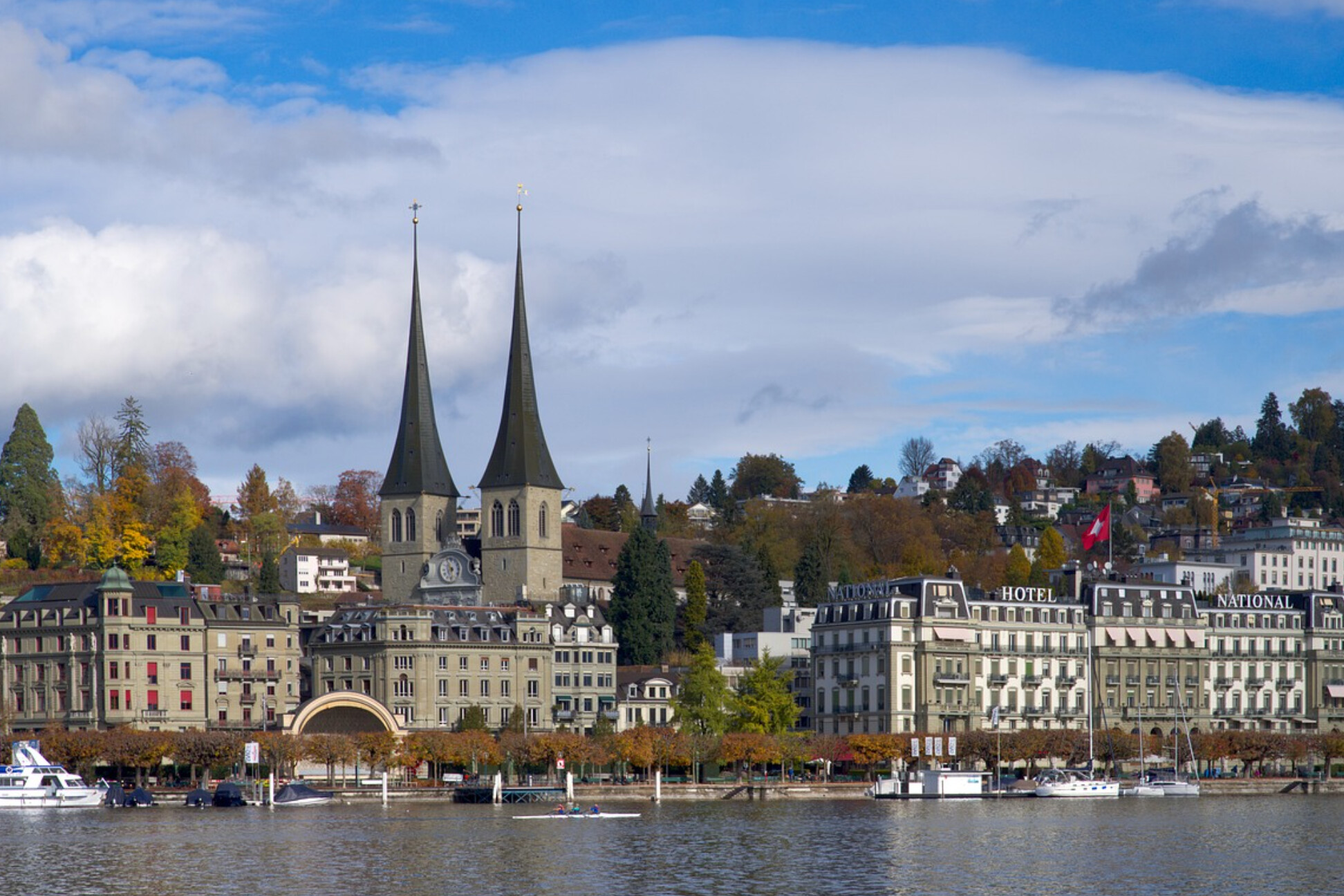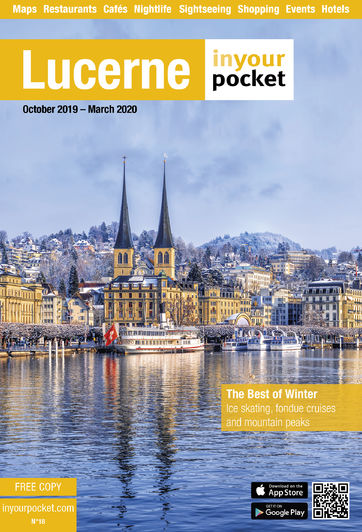A Stroll Through Lucerne’s Old Town
The Old Town of Lucerne, or Altstadt, is the city’s historical and cultural center. Begin your journey at the iconic Kapellbrücke (Chapel Bridge), Lucerne’s most famous landmark. Spanning the River Reuss, this 14th-century covered wooden bridge is adorned with 17th-century triangular paintings depicting the city’s history. Its adjoining water tower, Wasserturm, adds to the picturesque scene and is one of the most photographed landmarks in Switzerland.From the Chapel Bridge, wander deeper into the Old Town, where cobblestone streets wind through a maze of colorful medieval buildings adorned with frescoes. Each alleyway reveals surprises, from hidden fountains to charming shops selling Swiss souvenirs and local delicacies. Don’t miss the Weinmarkt Square, historically a marketplace and today a vibrant area with cafes and restaurants that are perfect for a pause to enjoy the atmosphere.
As you continue, visit the Spreuerbrücke (Spreuer Bridge). This lesser-known covered bridge was constructed in the 16th century and features a series of haunting yet captivating paintings depicting the “Dance of Death.” Crossing this bridge provides a quiet moment to reflect on Lucerne’s rich past and its artistic heritage.
The Musegg Wall and Its Towers
Next, ascend to the Musegg Wall, a well-preserved section of Lucerne’s old city fortifications. Built in the late 14th century, this wall stretches along the northern edge of the Old Town and offers a glimpse into the city’s medieval defenses. Visitors can climb several of its nine towers, each with its own unique history and purpose.The Zytturm (Clock Tower) is particularly noteworthy for its historic clock, which dates back to 1535 and continues to chime a minute before all other clocks in Lucerne. From the towers, enjoy panoramic views of the Old Town, Lake Lucerne, and the surrounding mountains. The combination of history and breathtaking scenery makes the Musegg Wall a highlight of any walking tour.
Lakeside Promenade and Lion Monument
Lucerne’s lakeside promenade is a serene and scenic path that runs along the shores of Lake Lucerne. Begin your walk near the Bahnhofquai and follow the promenade toward the Seebad Luzern, passing elegant hotels and outdoor cafes along the way. The shimmering waters of the lake, coupled with views of nearby Mount Pilatus and Mount Rigi, create a postcard-perfect backdrop.A short detour from the promenade leads to the Lion Monument, a moving tribute to Swiss Guards who were killed during the French Revolution. Carved into a sandstone rock face, the dying lion rests above a tranquil pool, its expression of sorrow and sacrifice leaving a lasting impression on all who visit. The monument, designed by Danish sculptor Bertel Thorvaldsen, is one of Lucerne’s most visited landmarks and a testament to its enduring history.

Cultural Stops and Hidden Gems
As you explore Lucerne on foot, take time to visit its cultural institutions and lesser-known attractions. The Jesuit Church, with its Baroque architecture and ornate interior, is a striking example of Lucerne’s religious and artistic heritage. Nearby, the Historical Museum offers an engaging overview of the city’s evolution, with exhibits ranging from medieval artifacts to modern art.For a more contemporary experience, wander to the modern Kunstmuseum Luzern, housed within the iconic KKL Luzern building designed by architect Jean Nouvel. The museum’s rotating exhibitions feature works by Swiss and international artists, providing a thought-provoking contrast to the city’s historic surroundings.
If you’re seeking a quieter corner of the city, head to the Old Cemetery near the Hofkirche (Church of St. Leodegar). This peaceful spot is shaded by ancient trees and dotted with ornate tombstones, offering a tranquil escape from the bustling streets.
Tips for an Enriching Walking Tour
Lucerne’s compact size makes it an ideal city to explore on foot, but a few tips can enhance your experience. Comfortable shoes are essential, as many of the streets are cobblestoned and the climb to the Musegg Wall can be steep. Bringing a bottle of water and a light snack will keep you energized, especially if you plan to explore for several hours.Maps and guides are readily available at the Lucerne Tourism Office near the train station. Alternatively, consider joining a guided walking tour for in-depth insights into the city’s history and culture. Many tours are led by knowledgeable locals who share fascinating anecdotes and lesser-known stories about Lucerne.
Time your walk to coincide with the golden hours of morning or late afternoon, when the sunlight bathes the city in a warm glow, making it even more photogenic. And don’t forget to bring a camera or smartphone to capture the beauty of Lucerne’s streets, landmarks, and views.
Beyond the City: Day Hikes and Excursions
For those looking to extend their walking adventures, Lucerne is surrounded by natural wonders that are easily accessible for day trips. The Rigi Panorama Trail offers a moderately challenging hike with spectacular views of Lake Lucerne and the Alps. Mount Pilatus, reachable by cable car or cogwheel train, features trails that range from easy walks to more strenuous climbs, all rewarded with panoramic vistas.Alternatively, take a leisurely boat ride across Lake Lucerne to Weggis or Vitznau, where additional trails lead through charming villages and along the lake’s shores. These excursions provide a deeper connection to the region’s landscapes and complement the urban exploration of Lucerne.





Comments